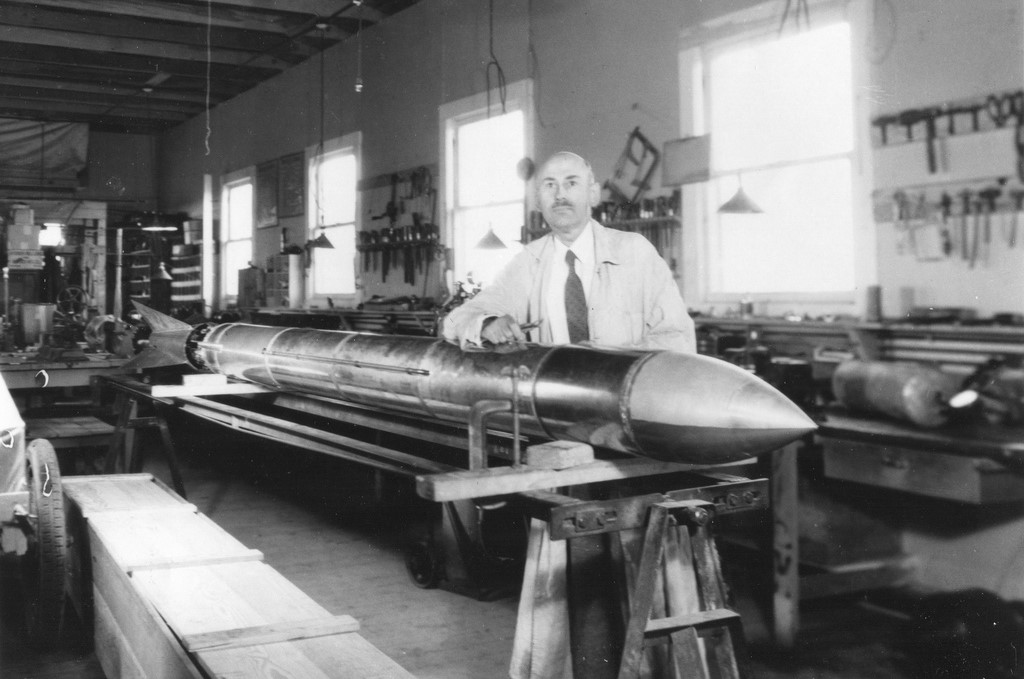Considered the pioneer of modern space rockets: Who is Robert Goddard?
He discovered the practicality of using rocket propulsion to reach long-distance destinations such as the moon. He proved that a rocket can work in a vacuum and does not need air to propel it. He developed and fired a liquid-fuel rocket.

Goddard came from a modest family. He has been interested in physics since his childhood. With the support of his family, he trained himself as an engineer from a young age. His interest in flying started with balloons and kites. This was followed by work making aluminum balloons. Goddard, who was very successful in high school, had his articles about space published in scientific journals while he was still at that age. The science fiction novels about space he read greatly influenced him and shaped his future plans. His dreamy nature has always enabled him to be brave. Even when he was younger he was dreaming about how great it would be to build a device that could possibly go to Mars.
Robert Goddard's interest in space flight did not leave him alone during his university years. After studying physics and mechanics at the technical university, he completed his master's degree and doctorate. During his graduate studies, he began conducting tests and experiments that suggested it was indeed possible to build a rocket for space travel.
Robert Hutchings Goddard (October 5, 1882 – August 10, 1945) was an American engineer, professor, physicist, and inventor who is credited with creating and building the world's first liquid-fueled rocket. Goddard successfully launched his rocket on March 16, 1926, which ushered in an era of space flight and innovation. He and his team launched 34 rockets[3] between 1926 and 1941, achieving altitudes as high as 2.6 km (1.6 mi) and speeds as fast as 885 km/h (550 mph).
Goddard first attracted public attention with the experiments he conducted in the basement of the physics building at the university in 1907. He received two US patents in 1914. One was for a rocket using liquid fuel, and the other was for a two- or three-stage rocket using solid fuel.
He began making systematic studies of the thrust provided by various types of gunpowder. In 1916, he requested funding from the Smithsonian Institution. The Smithsonian supported him for years after this request.
A report published by Goddard in 1920 outlined the possibility of a rocket reaching the moon and exploding a tiny dust cloud there to mark its arrival. The press covered Goddard's scientific proposal for a rocket flight to the Moon, and the feasibility of such a thing began to be talked about throughout the media.
Goddard's greatest progress in engineering occurred during his work in the 1920s and 1930s. In 1926, Goddard built and successfully tested the first rocket using liquid fuel. Although Goddard's rockets did not make much of an impression on government officials at the time, they were of great importance. He devoted his life to working on this subject and continued to launch rockets for years. This created a reputation for him that people could get answers from newspapers when they asked who Robert Goddard was. His experiments and studies had qualities that would make all rocket space flights possible throughout history and shed light on them. In World War II, Goddard offered his services to the US Navy. It was commissioned by the Navy to develop practical jet-assisted take-off and liquid-fuel rocket engines with variable thrust and was very successful.
Dr. Goddard's Major Contributions to Missile and Space Flight:
He discovered the practicality of using rocket propulsion to reach long-distance destinations such as the moon.
He proved that a rocket can work in a vacuum and does not need air to propel it.
He developed and fired a liquid-fuel rocket.
He developed control devices for rocket flights.
He received a patent from the USA for the multi-stage rocket.
He developed pumps compatible with rocket fuels.
Robert H. Goddard died on August 10, 1945. In 1961, 35 years after he launched the first liquid-fueled rocket, NASA named its space flight center (Goddard Space Flight Center) after him. Goddard was the first scientist to not only realize the potential of space flights and missiles but also directly contribute to their practical realization. A rare gift for both creative science and practical engineering, Goddard's dedicated labors were not recognized in the United States until the Space Age. But now the belated but well-deserved honor and acclaim goes to Dr. Robert H. Goddard.
